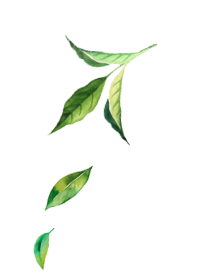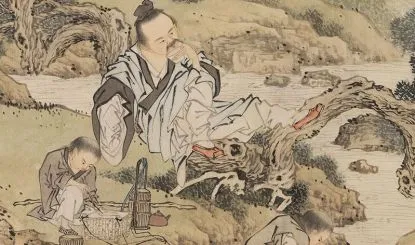




Perspectives on Tea Drinking in the Qing Dynasty
Chinese tea has left an indelible mark on global tea culture through two significant exports in history. The first instance occurred during the Tang Dynasty, leading to the emergence of Japanese tea culture. The second occasion was during the late Ming and early Qing Dynasties, when tea leaves made their way to Europe. This not only resulted in profound cultural exchanges but also had substantial economic ramifications.

By/ Liu, Han-Chieh, founder of Chun Shui Tea Group
Published in/ January 1997
When the British came into contact with tea through the Dutch, they were captivated by its fragrant and delightful flavors. Upon further investigation of its composition, they unearthed unprecedented tannic acid, caffeine in similar levels to coffee, and other beneficial substances for the human body. Consequently, they started procuring large quantities directly from the Chinese government. Not content with merely purchasing tea through the Dutch, they expressed dissatisfaction with the inconsistent quality of Chinese tea and obtained seeds from the Qing government to cultivate tea in Indian colonies. Implementing improvements in the manufacturing process, particularly for oolong tea, they initiated self-production and sales, eventually establishing the British East India Company with a global sales network. Tea swiftly evolved into an economic instrument in the hands of the British, with profits from the British East India Company's tea trade robust enough to sustain the military requirements of the British Asian Fleet. In stark contrast, in China—the birthplace of tea—tea has perennially been a staple of daily life, spanning from the Tang, Song, and Ming to the Qing Dynasties.
Chinese tea had been under state ownership since the Tang Dynasty and continued as such until the Qing Dynasty, with its political significance outweighing economic considerations. Throughout history, tea has served as a tool for controlling the borders of the Central Plains dynasties. During periods of peace, management of tea production was relatively relaxed, but during turbulent times, it became stricter. Despite its cultural and historical significance, there had never been a government policy or incentive guiding tea production and manufacturing in China. Instead, the government has assumed the role of a discerning observer, identifying regions with high-quality tea and eagerly seeking offerings, sometimes even monopolizing and enjoying exclusive rights. Remarkably, for thousands of years, no dynasty realized the economic potential of tea as an agricultural product. Even though Great Britain eventually replaced China as the center of the global tea trade, China remained largely unaware of the economic opportunities inherent in its tea industry.
During the Qing Dynasty, which originated from northern regions but underwent sinicization, the royal family developed a preference for jasmine green tea and drinking tea from covered bowls. Meanwhile, among the common people, tea drinking practices varied by region. In border regions such as Mongolia, Xinjiang, Tibet, and Yunnan, tea was typically brewed with added ingredients, a tradition that persisted into the Qing Dynasty. The Yongzheng era saw the introduction of Pu'er tea as tribute, which profoundly influenced the court's tea drinking habits. In northern regions, green tea was popular, often flavored with additional ingredients, while central China favored pure green tea. In Fujian and Guangdong provinces south of the Wuling Mountain Range, sun-dried tea leaves were processed into finished tea after roasting. Tea brewing shifted from large pots to small pots, resulting in a shift from lighter to stronger flavors. As exports decreased, consumers demanded tea to be classified by region and type, leading to the emergence of the term “Pouchong” tea. Tea drinking among common folk underwent a transformation, becoming more refined and diverse, especially in regions like Fujian and Minnan, where the practice of Gongfu tea gained momentum. Gongfu tea was characterized by its semi-fermented brewing method. Throughout China's rich history, tea drinking has been deeply intertwined with social interactions and status. However, during the Qing Dynasty, Gongfu tea among the common people took on a different significance, becoming a practice solely focused on the enjoyment of tea itself rather than serving social or ceremonial purposes. This refined tea-drinking method placed a strong emphasis on the quality of tea leaves, water, and teapots, using tea as a means of communication and connection. Using tea as a medium, as long as one understood tea, even beggars could become friends with wealthy merchants, establishing instant connections. Tea production in mountainous areas continued to pursue high-quality and unique teas, with dedicated efforts to improve tea varieties. During the Qing Dynasty, as the state's power waned, tea drinking among the common people flourished. Gongfu tea during the Qing Dynasty can be roughly divided into four periods. The first period was the budding stage, dominated by monks in temples who saw tea as a stable source of income apart from incense offerings. They produced high-quality teas that could fetch good prices, showcasing their skills. The second period was the popularization stage, led by wealthy merchants in various regions who pursued rare and unique tea varieties. They compared and competed with each other, taking pride in acquiring prized teas. The saying “spending a fortune to buy tea, not for the family but for the tea seeds from the Song variety” refers to this period.
During the initial period, tea utensils were made from local materials, and their characteristics were not very distinctive. In the second period, suitable utensils for brewing tea in small teapots emerged, including small stoves, Yixing teapots, landscape porcelain cups, water boilers, tea trays, and feather fans. These utensils were used to brew carefully crafted teas, complementing each other. The third period was characterized by refinement, with the accumulated experience in tea production and brewing. Not only did famous tea brands emerge from tea-producing regions, but also renowned tea utensil brands. In various tea-producing areas, each area produced its own specialty teas. For example, in the Wuyi Mountain area in northern Fujian, there were numerous tea varieties, each associated with a specific variety, creating a breathtaking array of choices. In Anxi, southern Fujian, teas like Tieguanyin were processed with thorough fermentation and roasting, competing with Wuyi rock teas for recognition and admiration.
In terms of teaware, the trend favored the Chaoshan small stove, the water heater made by Pan, Yu-Shu (lightweight and fire-resistant), the small red clay teapot made by Mengchen (using makeup clay), and the landscape blue-and-white cup crafted by Master Ruochen, all of which are considered precious items, collectively known as the “Four Treasures of Teaware”. The fourth period can be described as the popularization period, during which the tea-drinking customs spread among the laboring classes in society. Even without top-quality tea leaves, the tradition persisted, and even without exquisite teaware and utensils like red clay teapots or cups, crude stoves, or copper kettles, a tea set could still be assembled. In the gastronomically inclined Chaoshan region, dining and tea drinking became intertwined. In restaurants, it was customary to serve a pot of tea before meals to whet the appetite, and another pot after meals to aid digestion. Tea drinking had become a common practice among the people, to the extent that even impoverished overseas immigrants would not forget to pack a pot and four cups in a bamboo basket. In the humble lives of Taiwan's early settlers, they never forgot this tradition, and the red clay Mengchen teapot was particularly cherished. Even without fancy teaware, a simple bowl could suffice. And if there was no Tieguanyin tea from Anxi, one could simply plant a couple of tea trees on the hill behind the house and roast the leaves for a makeshift brew.
If the place behind the mountain is called Muzha, then it's Muzha Tieguanyin tea; if it's called Pinglin, then it's Pinglin Pouchong tea!
No matter where the Eight-Nation Alliance strikes, no matter who Taiwan is ceded to, life goes on, and tea must be brewed. The process and outcome of the Second World War had a significant impact on humanity, with an even greater impact on tea-drinking culture. To understand how, stay tuned for the next installment.
Expand your listening experience through the “Exploring Tea Culture Podcast”
▾▾▾Listen to the full episode▾▾▾
EP37. The Qing Dynasty Part I [Tea Doctor Shares Everything About Tea] The Elegant Encounter of Covered Bowl and Flower Tea - The Qing Dynasty Part 1 Feat. Liu, Han-Chieh (Gan Hou), CEO of Chun Shui Tea Group







